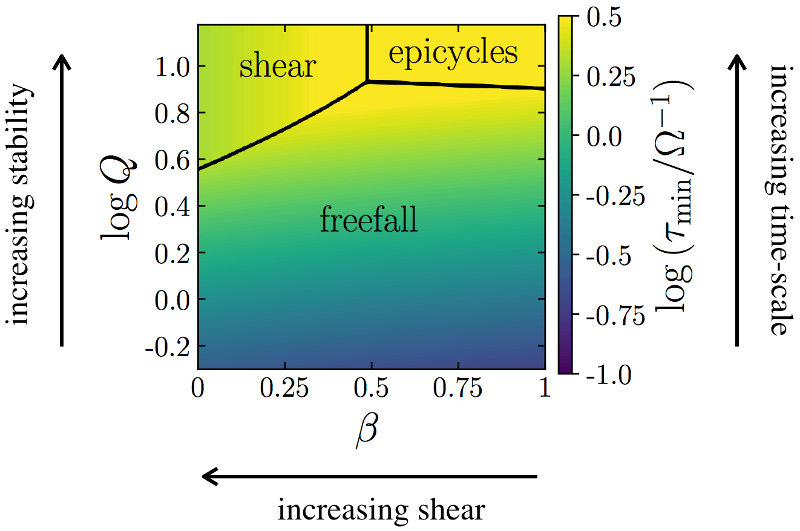| EPoS Contribution |
|
A General Analytic Theory for the Giant Molecular Cloud Lifetime: Unifying the Zoo of Evolutionary Mechanisms Governing the Cloud Lifecycle
Sarah Jeffreson U Heidelberg, Heidelberg, DE | |
| The molecular cloud lifetime provides an upper bound on the local time-scale for star formation, making it an essential quantity in determining the star formation rate. Molecular clouds evolve in galactic environments that are governed by a complex interplay of physical mechanisms, ranging from galactic dynamics to small-scale turbulence and feedback. Previous theories have predicted cloud lifetimes based on just one mechanism of cloud evolution, relevant only in a fraction of the nearby star-forming environments. That approach is inconsistent with recent observations, which show that a diverse range of entities are observationally-identifiable as clouds, with a correspondingly large spread of virial parameters and states of gravitational boundedness. I present an analytic theory for the lifetime of the archetypal molecular cloud, independent of theoretical assumptions about its size, structure, mode of gravitational collapse and gravitational boundedness. Within this theory, the cloud lifetime depends on the large-scale dynamics of the ISM, including gravitational collapse and galactic shear, as well as epicyclic perturbations in the plane of the host galaxy, cloud-cloud collisions and spiral arm crossings, where relevant. The resulting analytic predictions depend upon just five observable properties, accessible through measurements of the rotation curve, surface density and velocity dispersion of the host galaxy. In this contribution, I will present predicted cloud lifetimes for a sample of galaxies, and will compare them to observed cloud lifetimes. I will also present predicted cloud lifetimes for the Central Molecular Zone of the Milky Way, and demonstrate that these lifetimes are governed by the interplay between gravitational free-fall, galactic shear and epicyclic perturbations. Finally, I will present the first set of comparisons of our theory to hydrodynamic simulations performed using the moving-mesh code Arepo. Together, these results show that all evolutionary mechanisms need to be accounted for when aiming to understand the evolutionary lifecycle of molecular clouds. | |
 | |
| Caption: The minimum time-scale of cloud evolution, normalised by the orbital time, throughout the parameter space spanned by galactic shear and gravitational stability. The black lines delineate the regions in which each mechanism is dominant over the others (i.e. has the shortest time-scale). For each such region, other evolutionary mechanisms may also be relevant in setting the cloud lifetime. | |
| Collaborators: D. Kruijssen, U Heidelberg, DE S. Longmore, LJMU, UK M. Krumholz, ANU, AU |
Suggested Session:
Molecular clouds |

